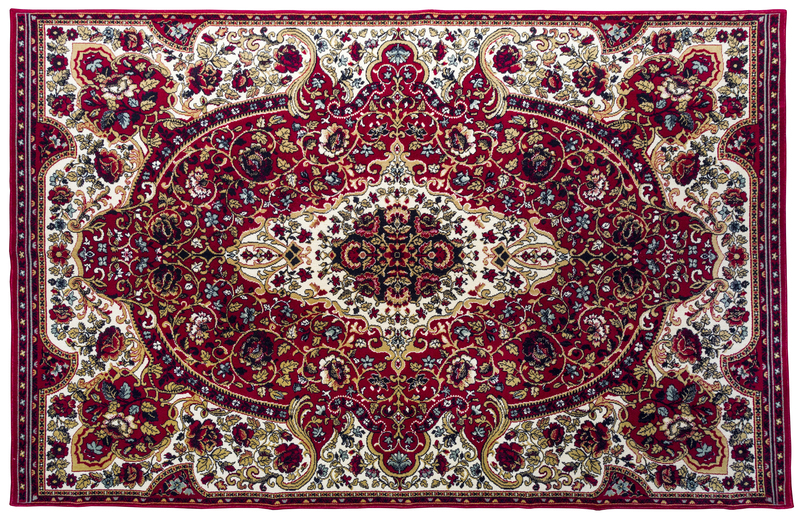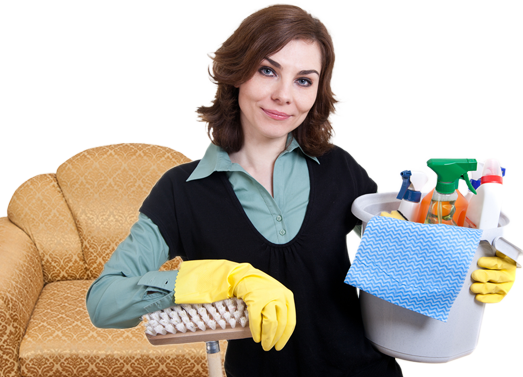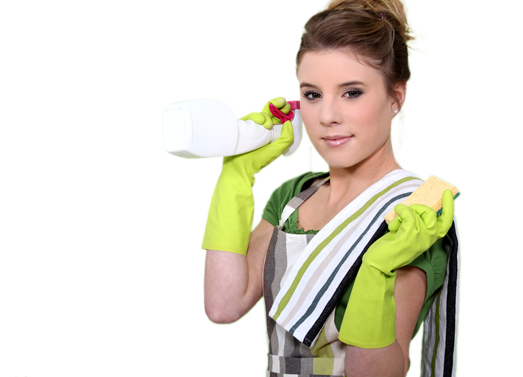Velvet Curtain Care: Effective Washing Methods for Lasting Beauty
Posted on 18/05/2025
Velvet Curtain Care: Effective Washing Methods for Lasting Beauty
Velvet curtains exude luxury and elegance, transforming any living space into a sophisticated haven. However, their plush texture makes them susceptible to dust, stains, and damage if not handled with care. Velvet curtain care is essential for preserving their rich appearance and extending their lifespan. In this comprehensive guide, we will walk you through the best washing methods for velvet drapes, maintenance strategies, and professional care tips. Whether you're new to velvet curtain maintenance or looking to refine your approach, this article will equip you with everything you need for lasting beauty.
Understanding Velvet Curtains: The Basics
Before diving into washing methods, it's important to understand the nature of velvet fabric. Velvet is a woven fabric characterized by its dense pile--tiny fibers packed tightly to create a plush, soft surface. This unique texture gives velvet its signature sheen and luxurious feel, but also makes it more prone to crushing and water marks.
- Material composition: Velvet can be made from silk, cotton, rayon, polyester, or blends. The fabric base will influence the best cleaning method.
- Types of velvet: Common varieties include crushed velvet, embossed velvet, and synthetic velvet. Each type responds differently to cleaning agents and washing.
- Color considerations: Rich and deep hues are popular for velvet curtains but may fade or bleed if not handled with care.
Knowing the fabric details is the first step in effective velvet curtain maintenance. Let's move on to cleaning strategies that protect both appearance and structure.

Why Proper Velvet Curtain Washing Matters
Incorrect cleaning methods can flatten the nap, cause water stains, or fade the vibrant color of your velvet drapery. That's why velvet curtain cleaning requires specific techniques designed to enhance and protect their natural allure. Proper velvet curtain washing not only removes dust and allergens but also preserves the tactile and visual appeal for years to come.
Potential Risks of Improper Washing
- Permanent crushing or matting of the velvet pile
- Water stains or streaks
- Color bleeding or fading
- Shrinkage or deformation of the fabric
Avoiding these risks is crucial for long-lasting beauty. Read on to explore step-by-step methods to clean velvet safely.
The Best Methods for Cleaning Velvet Curtains
When it comes to cleaning velvet curtains, there are several approaches, ranging from gentle hand-washing to professional dry cleaning. Below, we highlight the best options for keeping your curtains in pristine condition.
1. Routine Dusting and Maintenance
Not every cleaning session needs to be a deep wash. Regular maintenance prevents buildup and lengthens the time between intensive washes.
- Vacuum gently: Use a handheld vacuum with a soft brush attachment. Set the suction to low to avoid crushing the fibers.
- Shake it out: Every couple of weeks, remove the curtains from their rod and gently shake to dislodge dust and debris.
- Brush in the direction of the nap: A soft clothing brush or lint roller can help remove surface dust. Always brush in the direction of the fibers to maintain the nap.
This preventive care is the foundation of effective velvet curtain maintenance. But for more thorough cleaning, consider the methods outlined below.
2. Spot Cleaning Velvet Drapes
For localized stains or spills, spot cleaning is often sufficient. Prompt attention minimizes the risk of permanent damage or water spots.
Step-by-step spot cleaning process:- Blot immediately: Use a clean, dry, white cloth to blot (do not rub!) the spill. This absorbs as much liquid as possible without pushing it deeper into the fabric.
- Mild detergent solution: Mix a drop of gentle dish soap with lukewarm distilled water. Dampen a clean cloth in the solution, then gently dab the stained area.
- Rinse with clean water: Lightly moisten another cloth with distilled water to remove soap residue.
- Dry and fluff: Blot moisture with a dry microfiber towel. Use a hairdryer on low heat or let air dry. Once dry, gently brush the nap to restore its texture.
Tip: Always test any cleaning solution on an inconspicuous part of the curtain before applying it to the stain.
3. Hand Washing Velvet Curtains
For deep but gentle cleaning, hand-washing velvet curtains can be a safe alternative to machine washing, especially for cotton or polyester-based velvets. This approach is not recommended for silk velvets or older, delicate drapes.
How to hand-wash velvet curtains:- Remove hardware and check for colorfastness on a hidden seam.
- Fill a bathtub or large basin with cold to lukewarm water. Add a small amount of mild laundry detergent suitable for delicate fabrics.
- Submerge the curtain, gently agitating the water with your hands. Avoid twisting or wringing the fabric, which can crush the pile.
- Soak for 10-15 minutes, then drain the soapy water.
- Refill the tub with clean, cool water and rinse. Repeat until all detergent is gone.
- Gently press out excess water by pressing the curtain between clean towels. Never wring or twist!
- Hang to air dry, using a wide rod or clip to minimize creasing. Avoid direct sunlight, which can fade colors.
- Once dry, brush the nap in one direction to restore its softness and shine.
This gentle technique is key for long-lasting velvet curtain beauty.
4. Steam Cleaning Velvet Curtains
If your velvet drapes require a refresh without complete washing, steam cleaning velvet is an effective option. Steam relaxes the fibers and removes odors with minimal risk of water marks.
Safe steam cleaning steps:- Hang the curtains and ensure the steamer is set to a low or medium setting. Excessive heat can damage velvet.
- Hold the steamer several inches away from the fabric and move in downward strokes.
- For persistent wrinkles, gently smooth the fabric with your hand after steaming.
- Allow to dry thoroughly before closing or bunching the curtains.
Steaming is also helpful for restoring the pile of velvet window treatments that may have flattened from daily use.
5. Machine Washing: Use Caution
Some modern, synthetic velvets are washable, but machine washing is generally not recommended for most velvet curtains. If you choose this route:
- Check the care label: Only proceed if the manufacturer specifically states the curtain is machine washable.
- Use a gentle or delicate cycle: Cold water and mild detergent are a must. Place the curtain in a mesh laundry bag to protect it.
- Avoid spin cycles: High-speed spins can distort the shape and nap.
- Never tumble dry: Air dry by hanging, avoiding sunlight.
When unsure, always opt for professional velvet curtain cleaning over machine washing.
6. Professional Dry Cleaning
For silk-based, intricate, or antique velvet curtains, dry cleaning by an experienced professional is the safest choice. Inform the cleaner of the curtain's composition and any stains. Professional services have the right solvents and equipment to clean velvet without damage.
- Guaranteed results: Experienced cleaners know how to handle the delicate pile and ensure colors remain vivid.
- Convenience: Especially useful for large or heavily soiled drapes that can't be managed at home.
- Peace of mind: Less risk of fabric shrinkage or distortion.
If your velvet curtains are labeled with "dry clean only," do not attempt to wash or spot clean extensively at home.
General Velvet Curtain Care Tips
Proper velvet drape maintenance goes beyond just cleaning. Ongoing care plays a critical role in keeping your velvet looking plush, dramatic, and timeless.
- Avoid direct sunlight: Prolonged exposure can fade and weaken the fabric. Use sheer liners or position the curtains away from harsh sunlight.
- Rotate curtains: If possible, swap their position every few months to ensure even wear and fade resistance.
- Brushing: Use a soft-bristled brush to keep the nap fluffy and prevent dust buildup.
- Protect from mold and mildew: Ensure the room is well-ventilated, especially in humid climates. Promptly address any moisture issues.
- Handle with care: Always use both hands when removing or rehanging velvet curtains to avoid stretching.
- Store properly: If you need to store velvet curtains, roll them (not fold) and wrap them in acid-free tissue paper. Store in a cool, dry area.
Removing Creases from Velvet Curtains
After washing or storage, wrinkles and creases may appear. To safely remove them:
- Hang curtains and let gravity help relax creases naturally.
- Light steam application, as discussed above, works well. Avoid placing an iron directly on the fabric.
- For stubborn creases, place a towel over the fabric and gently press with a warm (not hot) iron, always keeping the iron above the towel.
Common Velvet Curtain Care Mistakes to Avoid
Even with the best intentions, mistakes happen. Here are missteps, often encountered in velvet curtain washing, that can quickly damage your drapery:
- Using hot water or harsh detergents--these can break down the fibers and fade the color.
- Wringing or twisting the fabric--this can flatten or break the pile, permanently altering texture.
- Tumble drying--the combination of heat and agitation often causes shrinkage and loss of nap.
- Ignoring care labels--always consult the manufacturer's specific instructions before attempting any cleaning method.
Avoiding these pitfalls is your best assurance of luxurious, long-lasting velvet curtains.

Frequently Asked Questions About Velvet Curtain Cleaning
Can I wash all types of velvet curtains at home?
Not all velvet is created equal. Silk velvet and some older or intricately designed curtains should only be dry cleaned. Cotton, polyester, and synthetic blends can typically be cleaned at home, with caution.
How often should I clean velvet curtains?
Routine dusting or vacuuming should be done every 1-2 weeks. Deep cleaning, whether hand-washing or dry cleaning, usually suffices once or twice a year unless there's a spill or visible soiling.
Why is distilled water recommended for cleaning velvet?
Distilled water lacks minerals that can leave behind spots or streaks. This is especially important for rich, dark velvets that easily show water marks.
How do I maintain the softness of velvet after washing?
Let velvet fully air dry, then use a soft brush to gently restore the nap. Light steam also helps revive the pile.
Final Thoughts: The Lasting Beauty of Well-Cared Velvet Curtains
Velvet curtains can be the centerpiece of any room, but their beauty is only as lasting as their care. By following the best velvet curtain washing methods--from simple dusting, careful spot cleaning, gentle hand-washing, to professional dry cleaning--you preserve their breathtaking elegance and luxurious feel. Remember: gentle handling, regular maintenance, and heed to care labels are the foundations for keeping velvet drapes rich and resilient for years to come.
For those who appreciate both tradition and innovation, velvet drape care combines artistry and science. Give your home the gift of timeless velvet beauty by choosing cleaning techniques that honor both the history and the future of this extraordinary fabric.





